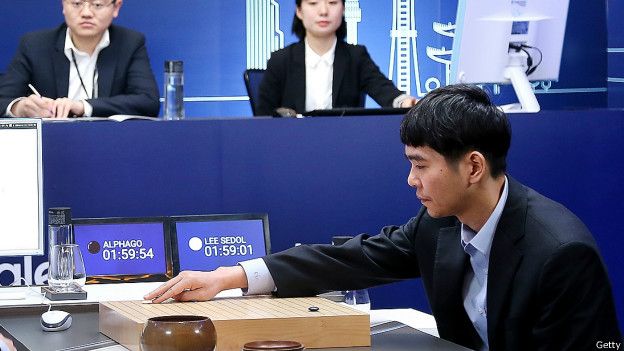
Quoc Le lived in a small town in Vietnam without electricity.
Ese dato de la vida de Le suele asombrar, sobre todo porque él es el líder del equipo “Cerebro de Google”, responsable de diseñar la inteligencia artificial que hoy supports the work of millions of people in the world.
At 32, one of Le's main responsibilities at Google is to develop a neuralgic network in computers like that of human beings, or at least simulate it.
Is about build an artificial brain. But it is possible?
The origin
Puede que la primera idea de Le no fuera una máquina con parecido humano y pensamiento propio. Sin embargo, el concepto de “inteligencia” siempre estuvo en la mente de Le desde su niñez.
He humbly recalls the small technological advances seen in his hometown of Thuy Dong: the first television, the first car he saw by, the first rice cooker his family bought.
“En aquel momento, cada uno de esos eventos en los que la tecnología se introducía en nuestro ambiente producían un cambio repentino en nuestra vida”, rememora Le.
Nevertheless, it was a photo of the moon landing in 1969 that inspired him to become a pioneer in artificial intelligence.
“Me pregunté: no somos los animales más rápidos de la Tierra, ni siquiera podemos volar, pero logramos llegar a la Luna. ¿Cuál es la única característica que nosotros tenemos y que no tienen los animales?”.

“Entonces me di cuenta que todo se debía a nuestro cerebro. Su inteligencia”.
At that time he assumed that intelligent machines were trivial, then he would understand that they were not.
“Decidí que construiría una”, recuerda con una sonrisa en los labios.
The investigation
He began researching artificial intelligence while studying at university in Australia and later during his PhD at Stanford University in the USA.

He was frustrated because the software of that time required a significant degree of human participation.
“Las máquinas que describíamos como inteligentes requerían que pasáramos mucho tiempo codificando decisiones para que el software funcionara. I wanted everything to be automatic“, afirma.
So he started working on a program that would allow the machine to think for itself.
Deep learning
The next step was to enter the field of deep learning, an attempt to make machines learn based on a group of algorithms.
It was already a developing field when it came to him, but he wanted the advancement to be faster thanks to the large-scale construction of a nerve system capable of processing a greater volume of data.

Una de esas neuronas artificiales -como la describe Le- reaccionó “muy feliz” de ver la foto de un gato sin siquiera decirle qué era un gato o sin que se le proporcionaran, con anterioridad, imágenes etiquetadas como “gato”.
Definitely it was an extraordinary advance, by showing that machines could learn at a very high level of precision, without the continuous human participation supplying information.
Another study showed a conversation between a machine and a human being, in which the machine was able to respond after studying the subtitles of the movies.
Human-machine dialogue
A study led by Le on the machine learning process collects the following dialogue between a computer and a human, to measure general knowledge:
– Human: Who is Skywalker?
- Machine: A hero.
– Human: Who is Bill Clinton?
- Machine: A millionaire.
– Human: Is the sky blue or black?
- Machine: Blue.
– Human: Do cats have tails?
- Machine: Yes.
– Human: Do cats have wings?
- Machine: No.
Google's brain
These findings and other results achieved in various studies have been incorporated into Google services, providing predictable responses to emails, recognizing places and people in photos, and performing searches with voice recognition.
Although deep learning is anticipated to be one of the most promising areas of study in the field of artificial intelligence, there are many other equally interesting areas.

Even within Google there is a team created after the acquisition of the British company DeepMind, in 2014, that uses machine learning technology for video games.
Last week the computer managed to defeat the champion of the ancient Chinese game known as Go, which has taken time to master due to the huge range of options it allows.
Other companies such as Facebook, Microsoft and Baidu (from China) have announced that they will invest in deep learning and other forms of artificial intelligence.
The future of Le
En la visión de Le, en algún momento su tecnología se transformará en una inteligencia artificial como la mostrada en la película “Ella” (Her, directed by Spike Jonze in 2013), in which operating systems act as personal assistants to human beings.

“Lo que me importa es build a machine that is capable of seeing, hearing and understanding each other“, dice Le, aunque admite que algo así ocurrirá en a very distant future.
What this young Vietnamese has achieved in the last five years is to help make artificial intelligence available to everyone, and throughout the world, including the inhabitants of his hometown in Vietnam.











No Comment